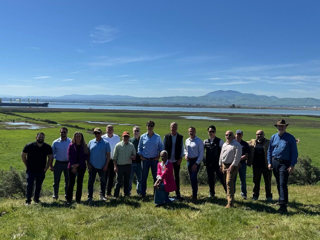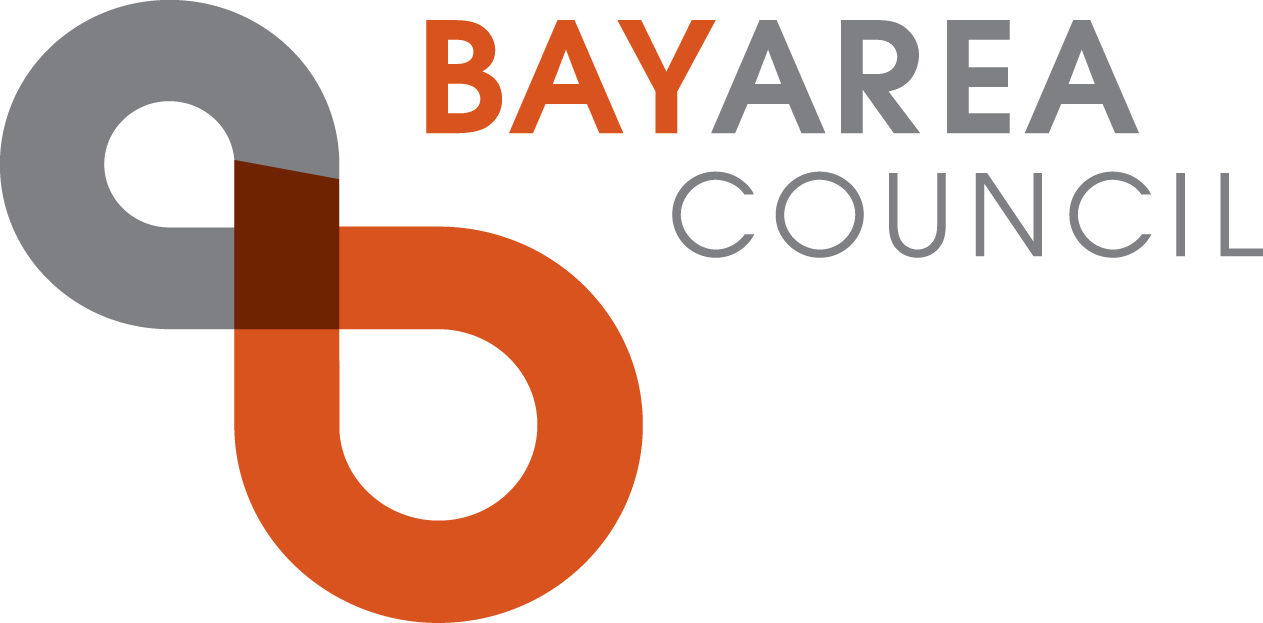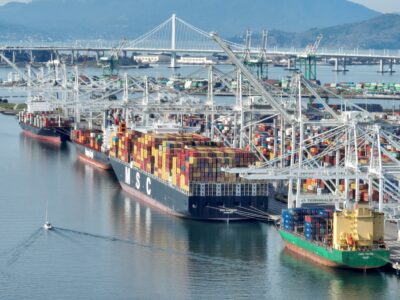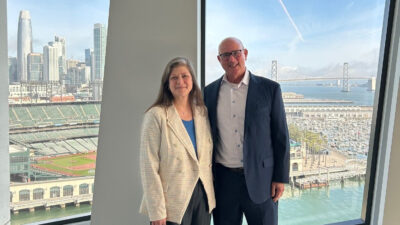Council’s Efforts to Relaunch Bay Area Shipbuilding, Maritime Industry Get Big Boosts
The Bay Area was once a global shipbuilding and maritime industry powerhouse, churning out more than 1,400 ships at 30 shipyards spread across the region during World War II. In the decades following the war, the region pivoted from heavy industry to technology and became better known for producing chips, not ships. But through our work in creating and building out a robust regional ferry system and activating our moribund waterfront (see item below), the Bay Area Council for the past several years has led a quiet effort to lay the foundations for revitalizing and relaunching the region’s shipbuilding industry and the many jobs and other economic activities it could support.
And now, that work is gaining momentum and more visibility as the federal government pursues a bipartisan agenda for rebuilding the nation’s shipbuilding capacity and a private development consortium – California Forever – eyes plans for a major shipbuilding facility on 1,440 waterfront acres near the small town of Collinsville that Solano County in 1979 presciently zoned for “heavy industry or marine terminal use.” Just this week, Council CEO Jim Wunderman and Senior Vice President Matt Regan joined San Francisco Bay Ferry Executive Director Seamus Murphy and local elected officials from Solano for a tour of the site led by California Forever leaders who are also working on plans for a new community nearby. The group came away from the tour impressed by the scale and potential of the site and plans for shipbuilding.

The opportunity is incredible. U.S. shipbuilding capacity has been in decline since the end of WWII and today we build less than 1% of all new ships launched globally. Much of the nation’s shipbuilding occurs on the East Coast and Gulf Coast, with Pacific Coast shipyards in San Diego and Seattle. With the Bay Area as the U.S. gateway to the Pacific, this makes the Solano site “one of a kind” for its size and location. Nowhere else in the United States does a site of this size and strategic logistical advantages exist. Wunderman discussed these advantages last fall with then-U.S. Secretary of the Navy Carlos del Toro during events the Council hosted for Fleet Week.
Not only would a Bay Area shipbuilding facility support national defense and commercial shipping interests, but it could also produce the next generation of electric ferries, which are currently built as far away as Seattle, Alabama and Korea, and provide a hub for the development and maintenance of offshore wind energy installations. A new shipbuilding industry would also support many thousands of advanced manufacturing and skilled trades jobs across our region that groups like the Working Waterfront Coalition (WWC) have already been working hard to create. WWC is actively training the next generation of maritime workers, including many from historically marginalized communities and individuals re-entering the workforce after incarceration. The Council was proud to celebrate a $2 million federal grant the WWC received last fall, and we look forward to partnering with them to ensure that this opportunity in Solano County, just a few boat lengths away from California State University Maritime Academy (Cal Maritime) in Vallejo, delivers on its full potential.
The Council is extremely excited about the opportunity for restoring the Bay Area’s proud shipbuilding and maritime heritage and the potential for California Forever’s plans to help make this a reality.





